Despite the challenges 2020 presented, we achieved several milestones throughout the year that demonstrate how PWSA is evolving as an organization.
This report highlights how that is occurring. In Notable Accomplishments, we discuss our prioritized program areas. From reducing lead levels, expanding our customer assistance programs, and implementing the largest capital program in PWSA’s history, these achievements show that we are taking the necessary steps to protect water services for current and future generations of Pittsburgh.
We summarize our Financial Health describing our current financial standing, projections for coming years, and highlight our success in securing state and federal funding to support our infrastructure investment. Our current bond ratings and the completion of two bond transactions provide the credibility and the resources to implement our $1.2 billion capital program over the next five years.
We include Performance Metrics that provide information about our daily performance. From the quality and quantity of customer service calls to the miles of pipes, catch basins, and hydrants we replace, you will see the steps we are taking to improve performance and deliver on our commitments to you. Additionally, we highlight pertinent water, sewer, and stormwater Project Accomplishments. These illustrate the work we are doing in the community to replace water mains, improve our infrastructure, rehabilitate sewer pipes, and protect neighborhoods from increasing amounts of rain.
Download the print version of the 2020 Year in Review.
Notable Accomplishments
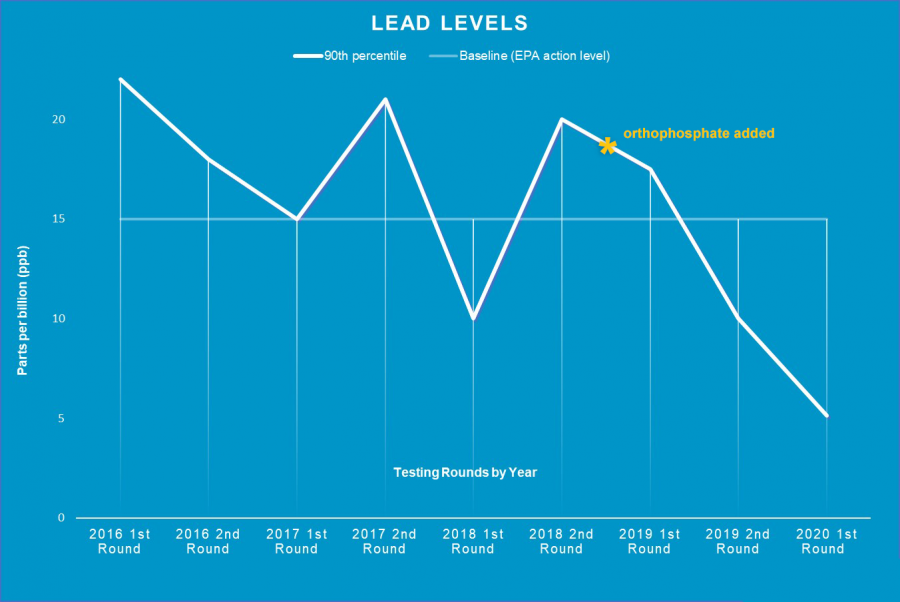 A graph showcasing a steep decline in lead levels after we introduced orthophosphate into our water distribution system in 2019.
A graph showcasing a steep decline in lead levels after we introduced orthophosphate into our water distribution system in 2019.
Lowest Lead Levels in Decades
In July 2020, Pittsburgh Water and Sewer Authority (PWSA) announced lead levels of 5.1 parts per billion (ppb), which is a result well within state and federal regulations. This is approximately 10ppb below the state and federal action level of 15ppb. At 5.1 ppb, this is the lowest lead level we have measured in 20 years.
Since implementing our Community Lead Response in 2016, we have removed 8,319 public lead service lines and 5,391 private lead service lines at no cost to ratepayers. Now that lead levels comply with state and federal standards, we will continue to remove lead service lines as water main replacement projects take place across our water service area.
Since implementing our Community Lead Response in 2016, we have removed 8,319 public lead service lines and 5,391 private lead service lines at no direct cost to ratepayers.
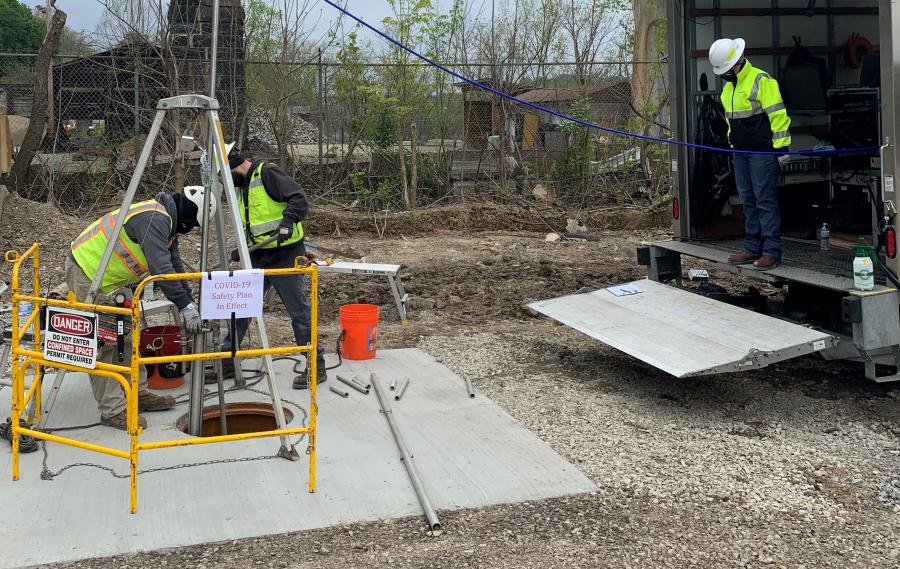 Contractor crews from Pure Technologies inspect water mains that run from our Aspinawall Water Treatment Plant, through the Pittsburgh Zoo, to the covered Highland II Reservoir.
Contractor crews from Pure Technologies inspect water mains that run from our Aspinawall Water Treatment Plant, through the Pittsburgh Zoo, to the covered Highland II Reservoir.
Record Capital Investment
The Pittsburgh Water and Sewer Authority (PWSA) is increasing its spending on critical water infrastructure improvements. Despite construction delays due to the pandemic, our total capital investment in 2020 totaled approximately $127 million, an increase from 2019 and our largest annual investment. The investment will continue as we renew large water infrastructure and rehabilitate our network of water and sewer pipes that carry water to and from homes and businesses.
This investment reflects the work outlined in our 2021-2025 Capital Improvement Plan. Budgeted at $1.2 billion, the Capital Improvement Plan is a strategic document that guides the improvements we are making to Pittsburgh’s water, sewer, and stormwater infrastructure.
Despite construction delays due to the pandemic, our total capital investment in 2020 totaled approximately $127 million, an increase from 2019 and our largest annual investment.
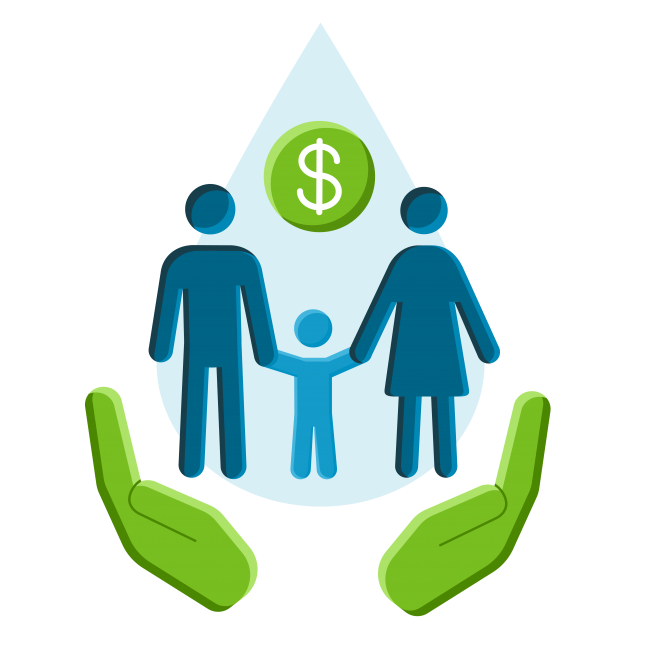
Expanded Customer Assistance Programs
Our customer assistance programs, established in 2018, support our most vulnerable customers. During our 2020 rate-setting process with the Pennsylvania Public Utility Commission (PUC), we worked with community stakeholders and state agencies to incorporate several enhancements to simplify the enrollment process and expand access to more customers.
During this challenging time, no one should have to choose between paying a water bill and another essential expense. We are making every possible effort to protect our most vulnerable customers.
During this challenging time, no one should have to choose between paying a water bill and another essential expense.

Balanced Rate Structure
On January 14, 2021, new water and wastewater rates approved by the Pennsylvania PUC went into effect. The new rates result from a long process with state regulators and community stakeholders and balance the needs of our most vulnerable customers and the improvements we need for our water and sewer systems.
The rate increase resulted in an additional $14,150,000 in water revenue and an additional $4,850,000 in wastewater revenue. The additional funding goes towards improving our drinking water treatment and distribution system, rebuilding aging sewer lines, and designing innovative stormwater mitigation projects.
The additional funding goes towards improving our drinking water treatment and distribution system, rebuilding aging sewer lines, and designing innovative stormwater mitigation projects.
Financial Health
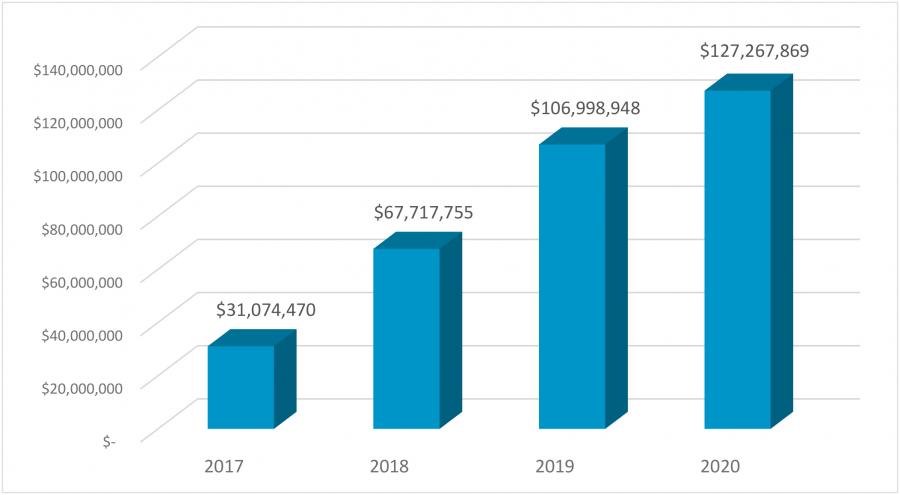 Actual Annual Capital Investment 2017-2020
Actual Annual Capital Investment 2017-2020
THE PITTSBURGH WATER AND SEWER AUTHORITY HAS A POSITIVE FINANCIAL OUTLOOK. Despite the economic downturn caused by COVID-19, we maintained our cash balance and achieved a record level of capital investment as we continue to boost our reserve funding to ensure maximum financial flexibility. In the long-term, these accomplishments will help to reduce costs and create a more sustainable financial future for PWSA.
Since 2019, we have saved ratepayers roughly $80 million by using these federal and state funding programs over traditional bond financing.
Performance Metrics
By Department:
Customer Service
Average Answer Speed
- 23 seconds
Call Handling Rate
- >98.9% of 131,873 calls
Average Handling Time
- 4 minutes 8 seconds
Abandonment Rate
- 1.1% of total calls
Human Resources
Average Number of Training Hours Per Employee
- 17 hours 55 minutes
Positions Filled
- 51
Public Affairs
Meetings Hosted/Attended
- 62
Social Media Request Response
- Nearly 100% within 3 business days
Social Media and Newsletter
- 12,061 subscribers
Management Information Systems
Average Critical Information Infrastructure Availability
- >99% of the time
Support Requests Received
- 3,123
Engineering
Water
Water Main Replaced
- 8.9 miles
Service Lines Replaced Including Lead and Non-Lead Material
- 4,619
Hydrants Replaced
- 95
Valves Replaced
- 455
Pipe Inspected
- 2.3 miles
Sewer
Storm Drains Replaced
- 843
Sewer Replaced/Reconstructed
- 1.1 miles
Sewer Lined
- 13.3 miles
Operations
Water
Water Meters Repaired/Replaced
- 5,500
Major Service Disruptions That Affected More Than 2,000 Customer Accounts for Longer Than 6 Hours
- Zero
Sewer
Debris Removed From Storm Drains
- 4,426 tons
Sewer Pipe Inspected
- 19.2 miles
Water Treatment Plant & Lab
Daily Average of Finished Water Produced
- 69.6 Million Gallons
Project Accomplishments
Water
Bates Water Main Replacement Project
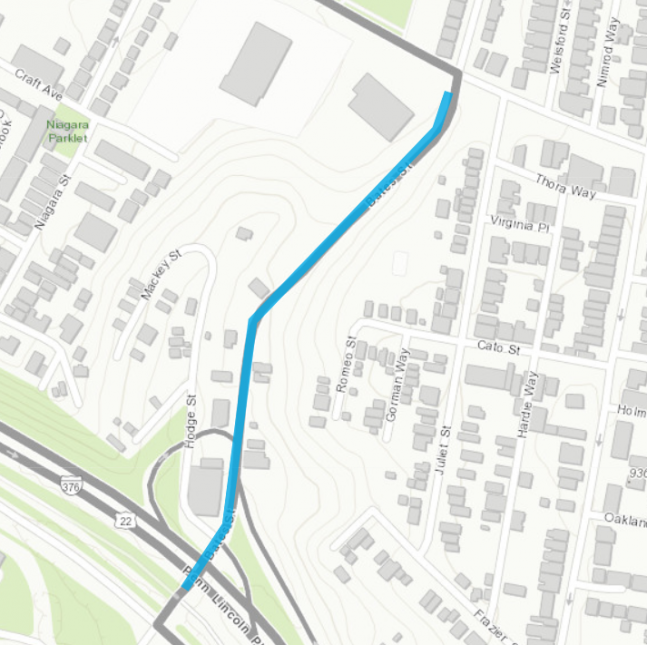
On a busy stretch of Bates Street, between Boulevard of the Allies and Second Avenue, we replaced approximately 1,500 feet of an aging water main. These improvements will provide more reliable service to our customers in this critical area of our water distribution system.
Highland Park Microfiltration Plant
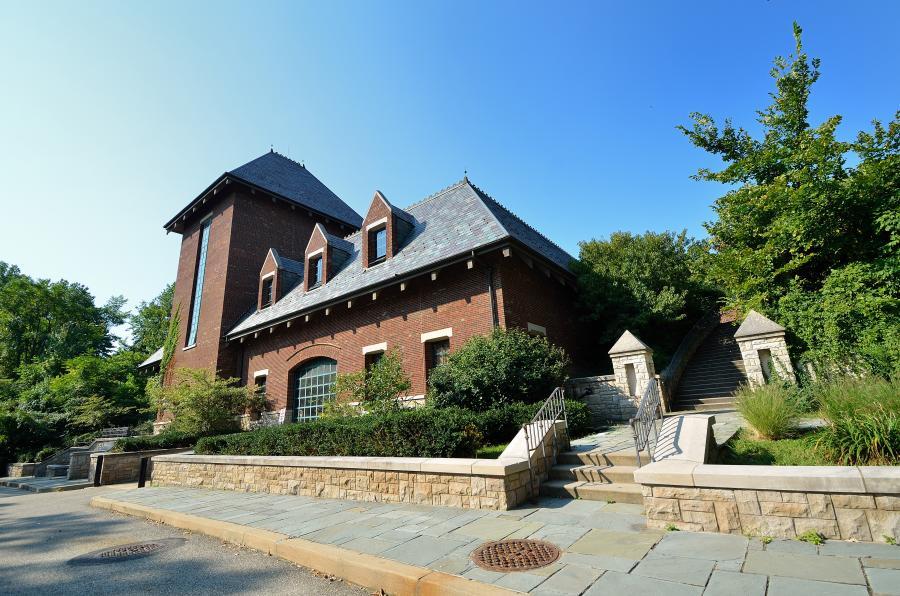
The Highland Park Microfiltration Plant is the backbone of the Highland I Reservoir. The Microfiltration Plant allows the reservoir to stay uncovered, as it functions
as a water retreatment plant by drawing water from the open reservoir and treating it again via sophisticated microfiltration and ultraviolet light disinfection processes. We made the following improvements, totaling $14 million, before its reopening in September 2020:
- Installation of the ultraviolet disinfection technology.
- Maintenance of the microfiltration system including replacement of microfilters.
Highland I Reservoir Security Improvements
To further maintain the open Highland I Reservoir as a
public amenity for all to enjoy, we completed the following series of projects to meet stricter state water quality regulations and improve security around the reservoir:
- Restoration of the parapet wall surrounding the reservoir.
- Installation of 360-degree security cameras to ensure the safety of the reservoir and visitors.
- Repaving of the walkway, thanks to our partners at the City of Pittsburgh.
Sewer
Edgerton Avenue Sewer Relocation Project
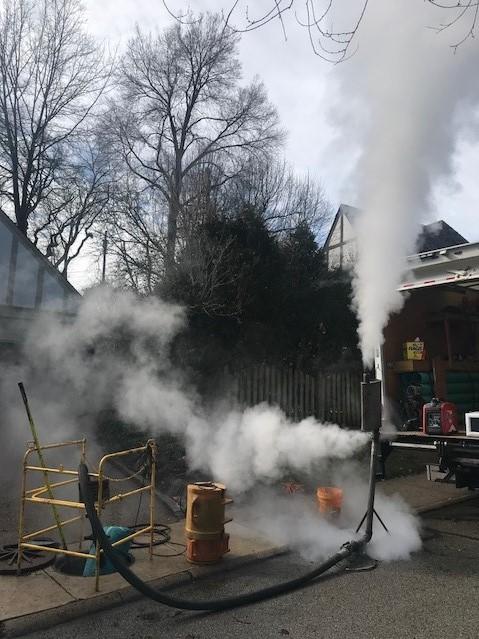
In response to a 15-inch sewer collapse on Edgerton Avenue in the Point Breeze neighborhood, we successfully relocated the collapsed sewer into the edge of the Homewood Cemetery and restored the street to its original condition.
Stormwater
Saw Mill Run Stream Restoration
We restored two sites along Saw Mill Run in Overbrook as part of the larger Saw Mill Run Integrated Watershed Management Plan. This project will improve water quality and stormwater management in these sections of the stream. The following are specific improvements:
- Restoring the heavily eroded streambanks and stabilization of the streambank slope.
- Using natural channel design techniques that provide environmental benefits.
- Repairing storm sewer outlets that discharge directly into the stream.
Wightman Park Phase I Stormwater Improvements
The stormwater improvements in Wightman Park were part of the master planning process for Wightman Park, completed in collaboration with Council District 8 and the City of Pittsburgh. The stormwater improvements in the park included re-grading the park to improve drainage, installing underground storage below a new ball field, and constructing a rain garden. These improvements provide better stormwater management in Squirrel Hill.
- The underground storage system holds up to 300,000 gallons of rainwater.
- The rain garden can capture up to 52,000 gallons of stormwater.
Special Project
10th Street
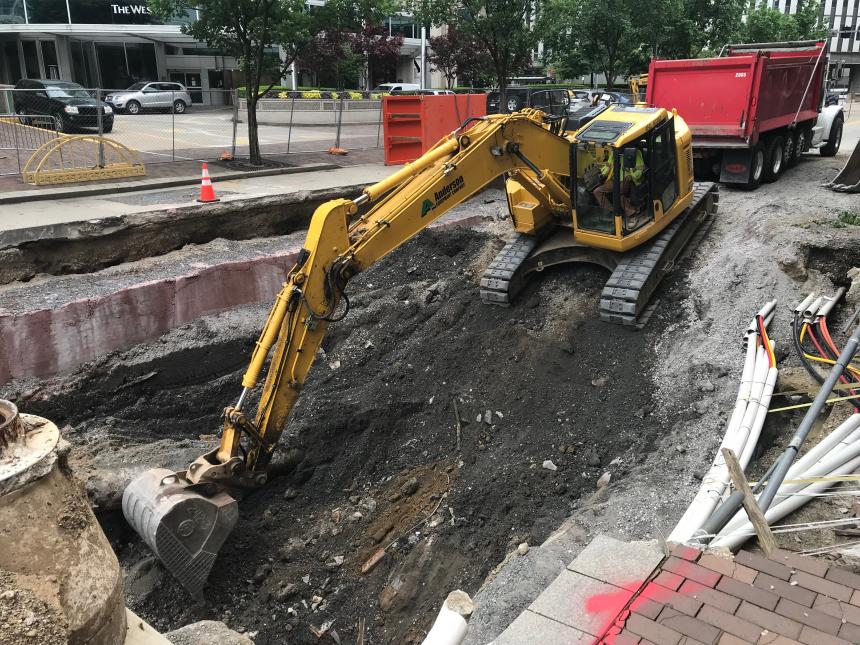
Per a cost-share agreement with the City of Pittsburgh, we successfully helped to restore the segment of 10th Street Downtown following a large sinkhole that collapsed in late October 2019. In addition to clearing approximately 2,500 tons of debris with a Vactor machine sitting on a river barge and a diver to remove debris from the riverbed, crews also:
- Added approximately 746 tons of stone backfill to the sinkhole.
- Replaced 2,097 square feet of bricks.
- Poured approximately 395 tons of concrete.
- Logged over 1,100 hours of work to complete the project.
Awards & Recognitions
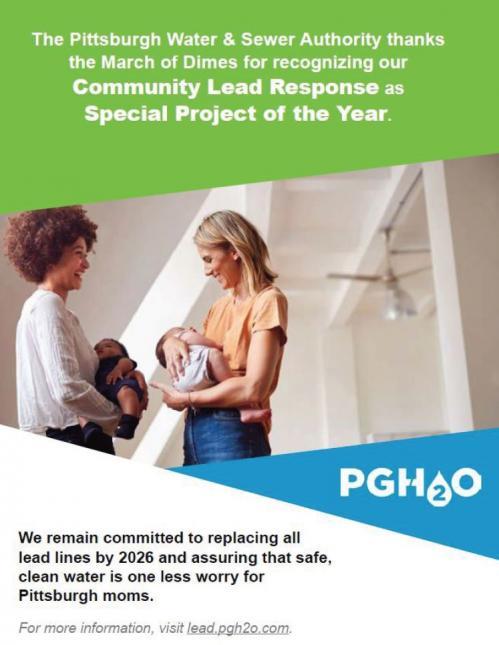 In 2020, PWSA was recognized by the March of Dimes Pittsburgh for its Community Lead Response.
In 2020, PWSA was recognized by the March of Dimes Pittsburgh for its Community Lead Response.
The Pittsburgh Water and Sewer Authority was the recipient of the following awards and recognitions in 2020.
Water Environment Federation
- Utility of the Future Today
March of Dimes Pittsburgh
- Special Project of the Year: Community Lead Response
MAPPS
- Geospatial Excellence Award for Surveying/Field Data Collection: Curb Box Inspection Program
ASCE Pittsburgh
- 2020 Sustainability Award: Wightman Park Stormwater Improvement Project
